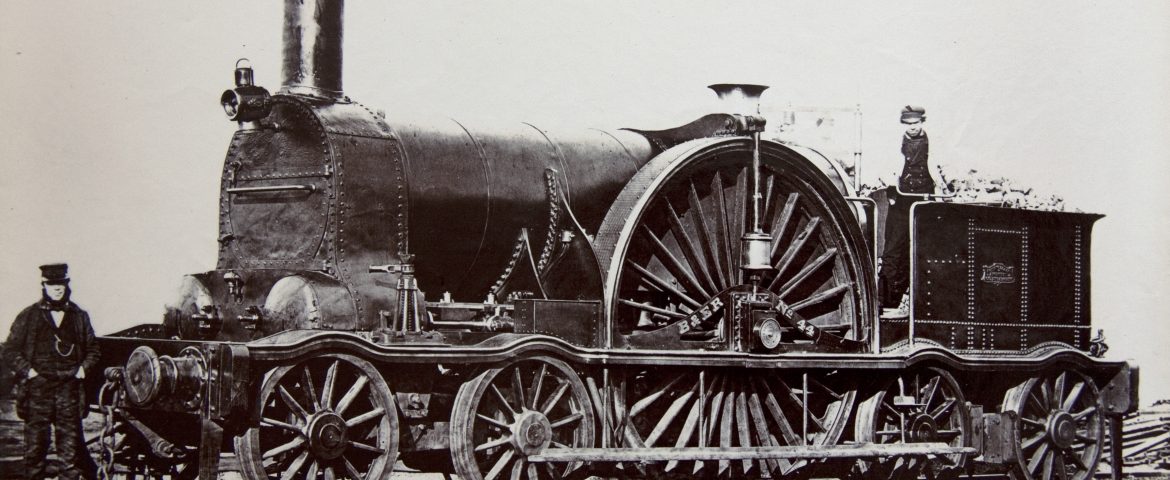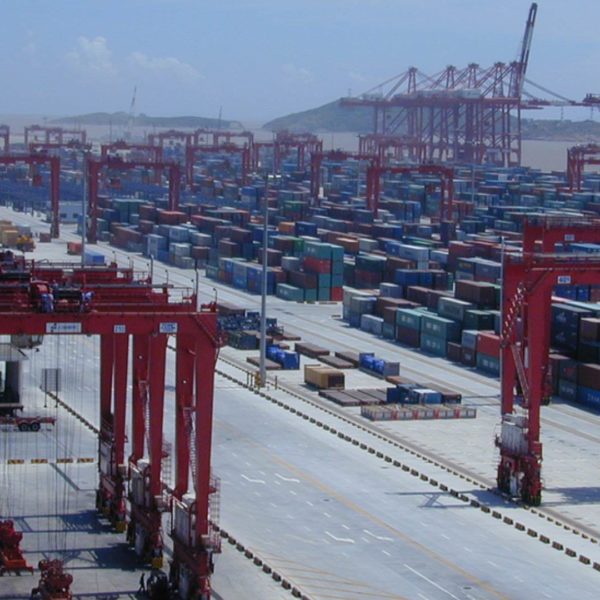It’s hard to imagine a world without time zones; it is such a basic and fundamental construct of travel, transportation and planning. But time zones weren’t really a thing until the mid to late 1800s with the invention of mechanical clocks that were built to a level of sophistication that could keep regular time. Prior to this local towns kept their own time via solar measurement. In a world before quick cross country travel and trade, in many ways there wasn’t a huge necessity to change.
The very first establishment of a fixed time zone, beyond just local solar time keeping was in the UK when the government wanted to provide a means for ocean going vessels to better plan their voyages and calculate longitude using a standard time.
As railroads developed in the 1800s, disconnected and altering times made it nearly impossible to coordinate departures, arrivals and general railway operations without correct time. The first adoption of a time zone was again in the UK in 1840 as the Great Western Railroad sought to better plan their operations.
In 1868 New Zealand, which was then a British colony adopted a standard time. This became the first standardized time outside UK. Other countries followed in a limited way as the advantages of defining time zones was apparent let there was no consensus on how to further expand the system and many local areas simply preferred “their time”.
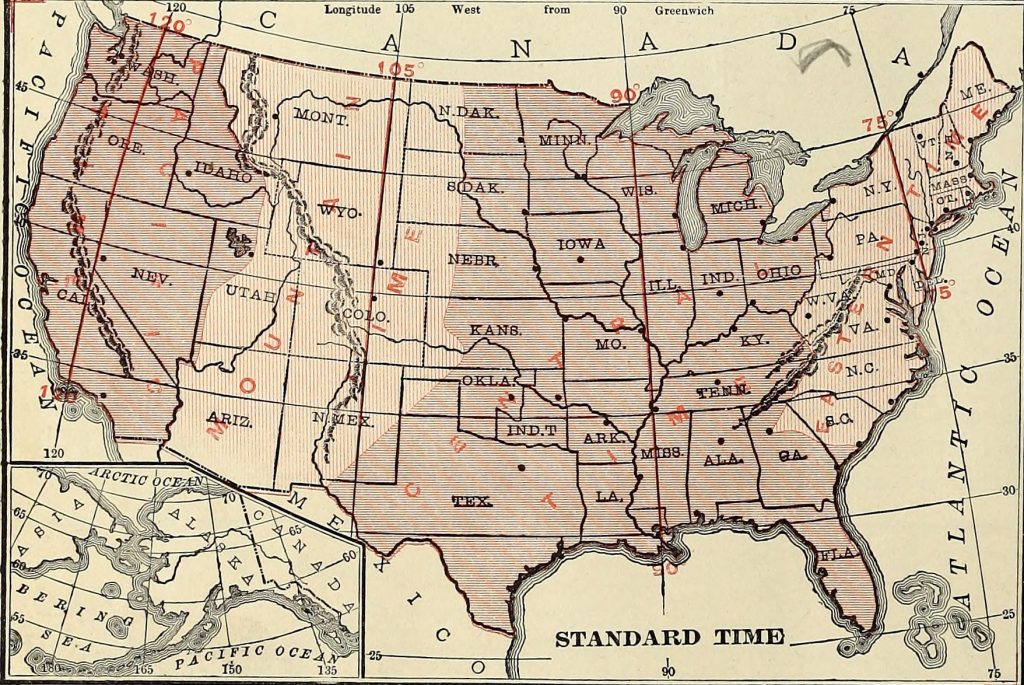
Railroads in the United States were expanding rapidly across the country during the mid 1800s. Particularly following the conclusion of the civil war railroads were what the tech industry is today, with new ones popping up constantly, and incumbents expanding rapidly. But they were struggling to adopt their operations to their broadening web of tracks. Railroads were still “new” and in many ways crude, railroads often didn’t coordinate operations well between other railroads and were stuck utilizing telegraphs, with many poles and wires being strung up alongside tracks. The continued reliance on local solar time, generally calculated from the hometown of the railroad’s headquarters certainly didn’t help.
It took until 1863 for what we know understand as time zones to be proposed by Charles Dowd, as a way to better manage this. However it took nearly twenty more years for everyone to agree on the best way to divide North America’s time zones. With ongoing discussion with Canada’s railways, the four time zone division was finally put into action in 1883 following further time zone development by Canadian engineer Sanford Fleming . Even this later push for time zones likely wouldn’t have seen it’s way to enactment if the editor of Official Guide to Railways didn’t take up the cause and use his connections to push the matter to various officials across the country. There was still no national mandate requiring cities to adopt this standard and some cities held out , instead preferring to rely on their own time. Finally in 1918 congress mandated the time zones nationwide.
Railroads spurred this development because they were the first type of transportation that could cover distances in a way that would make time coordination important. Trips went from taking several weeks or even months to taking at most a couple days. The rapid speed and advancement of transportation meant that the country was more connected than ever and needed a standard method of coordinating this new form of transportation to let it flourish. Many railroad tracks were and still are single track, meaning that trains heading in opposing directions must pass each other at special sidings or passing tracks that allow one train to pass the other. The trains must carefully coordinate these “meets”, as failure to do so can result in deadly head on collisions. Speeds rapidly rose as well on railroads, with very early trains moving at only 10-15 mph but within twenty years many passenger trains were moving at 30-40mph then by 1900 speeds of 70-90 mph were not uncommon. The amount of precision required to maintain train schedules and safely operate railroads increased dramatically along the increase in train speeds and the shear number of trains operating on railway systems.
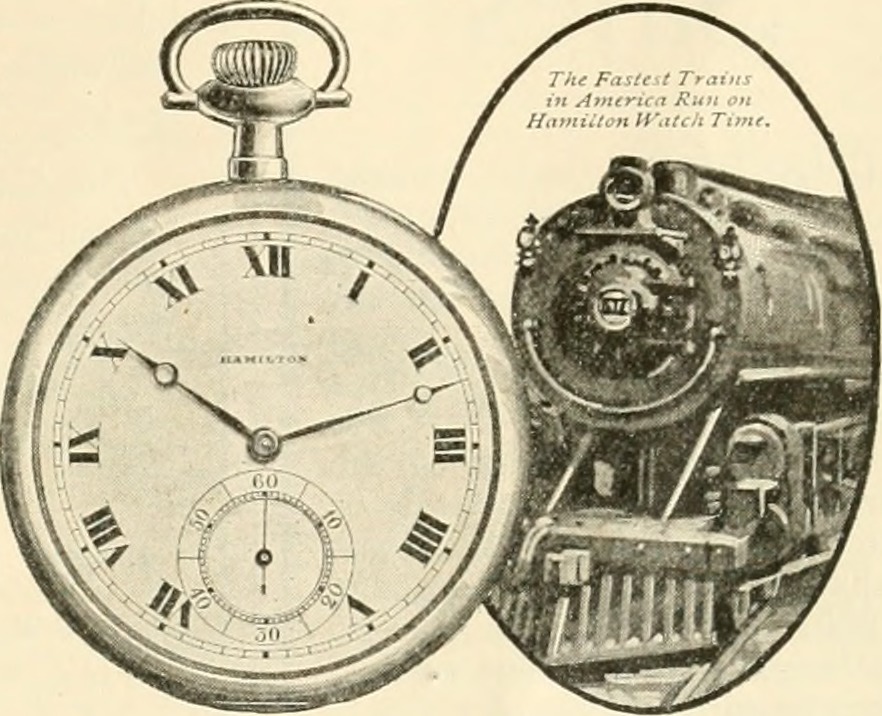
For years train crews would carefully double check that their watches were properly adjusted to the master clock at railway stations to ensure they could accurately operate to the required train schedule. Generally the most accurate clock in most towns around this time period was the clock at the railway station. Lots of railway stations either had a large wall clock or larger ones even had a clock tower.
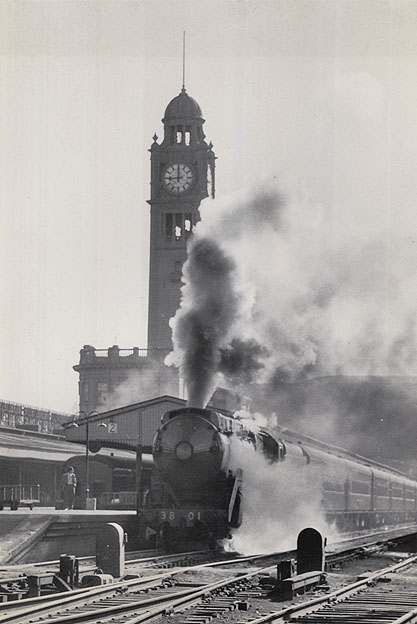
Even today on Amtrak’s busy Northeast Corridor, coordinating arrival and departure times precisely is required to operate the system efficiently and safely given the number of daily trains operating on the lines. Particularly for high speed rail with trains speeds commonly over 140mph, maintaining a very tight schedule is incredibly important to maintain appropriate space between trains on the railroad and to avoid delays.
Of course obtaining the accurate time is as easy as pulling your phone out. Train dispatching centers use a mix of Centralized traffic control, signal systems throughout the rail system and ample radio communication to operate rail lines. Increasingly railway locomotives have GPS devices that provide dispatchers controlling train movements a clear picture of exactly where a train is and how fast it is moving. This type of visibility has only been common place in the last decade or so. It wasn’t until the mid 1960s-1970s that all trains had radio systems that could be used to communicate between trains and dispatching centers.
With the rise of the US interstate highway system and widespread adoption of the automobile, trains came to play a less important role in the daily lives of business and tourist travelers. The majority of freight travels by truck, but still nearly 40% of total gross tons of all freight moved overland in the US is moved via rail. The development of containerization played a key role in railroad’s continued large role in general freight. This type of transportation known as intermodal, utilizes multiple modes of transportation such as ocean ships, trucks and trains to collectively move the container the most efficient way to it’s final destination. For example a import container from Korea might be off loaded from a ship in Los Angeles onto a train. The train then takes the container to Memphis, where it is loaded onto a truck for local delivery. This method utilizes the long haul efficiency of rail with the short haul utility of trucks. Railroads also haul a significant amount of break bulk freight in railroad cars such as ethanol in tank cars or coal in hopper cars and provide cross border shipping from Mexico and Canada. With the creation of NAFTA cross border freight moving via train massively increased in volume. Trucks would not be able to efficiently haul the volume of freight one train can, meaning one train can move the same amount of cargo as literally hundreds of trucks. Trains are also around four times more energy efficient than over the road trucks representing a great way to reduce carbon emission within supply chains.
Likely if railroads hadn’t been the driver of time zone adoption, increased globalization and the development of airplanes would have. Coordinating global businesses, stock markets, air travel and countless other modern essential would be made impossible without the use of standardized time zones.
Interestingly enough worldwide time zone development was somewhat independent of the North American and European adoption of it. While a wordwide timezone system was proposed in 1879, it wasn’t adopted until about 1929.
Recommended for further reading:
https://www.history.com/this-day-in-history/railroads-create-the-first-time-zones
https://en.wikipedia.org/wiki/Time_zone
https://railroad.lindahall.org/essays/time-standardization.html
